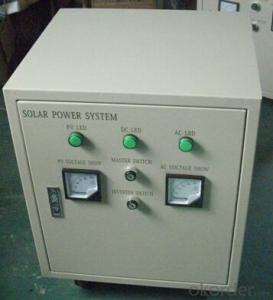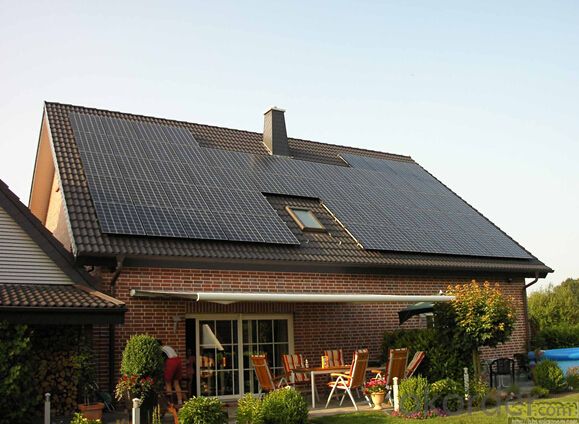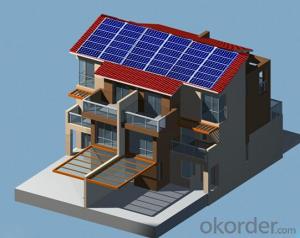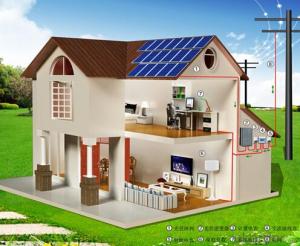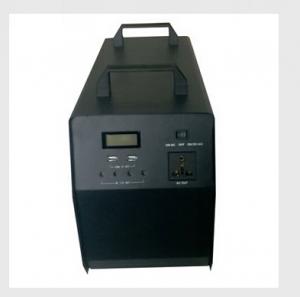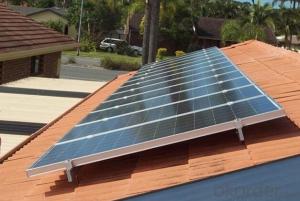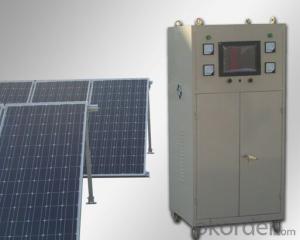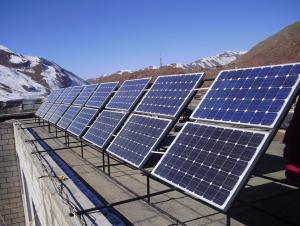Xtj Prime Solar Cells CNBM Solar Roof Solar System 12000W Popular in Africa
- Loading Port:
- Shanghai
- Payment Terms:
- TT OR LC
- Min Order Qty:
- 1 PCS
- Supply Capability:
- 3000 PCS/month
OKorder Service Pledge
OKorder Financial Service
You Might Also Like
Introduction of Solar Home System
The basic PV or solar cell typically produces only a small amount of power. To produce more power, solar cells (about 40) can be interconnected to form panels or modules. PV modules range in output from 10 to 300 Watts. If more power is needed, several modules can be installed on a building or at ground-level in a rack to form a PV array.
In addition to solar cells, a typical PV module or solar panel consists of these components:
A transparent top surface, usually glass
An encapsulant -- usually thin sheets of ethyl vinyl acetate that hold together the top surface, solar cells, and rear surface
A rear layer -- a thin polymer sheet, typically Tedlar, that prevents the ingress of water and gases
A frame around the outer edge, typically aluminum.
Energy performance ratings for PV modules include the following:
Peak Watt -- Measures the maximum power of a module under laboratory conditions of relatively high light level, favorable air mass, and low cell temperature. These conditions are not typical in the real world.
Normal operating cell temperature -- Measures a module's nominal operating cell temperature after the module first equilibrates with a specified ambient temperature. It results in a lower Watt value than the peak-Watt rating, but it is probably more realistic.
AMPM Standard -- Measures the performance of a solar module under more realistic operating conditions. It considers the whole day rather than "peak" sunshine hours, based on the description of a standard solar global-average day (or a practical global average) in terms of light levels, ambient temperature, and air mass.
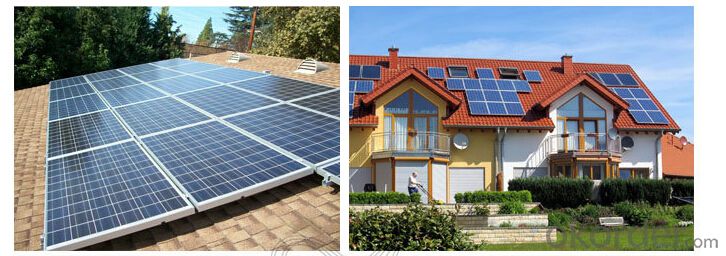


Working Principle of Solar Roof System
The stand alone Solar Home System is an off-grid solar system which uses batteries to store the solar energy. Stand alone solar system solutions design for those who are not able or willing to connect to electricity grid.
Specification of Solar Home System
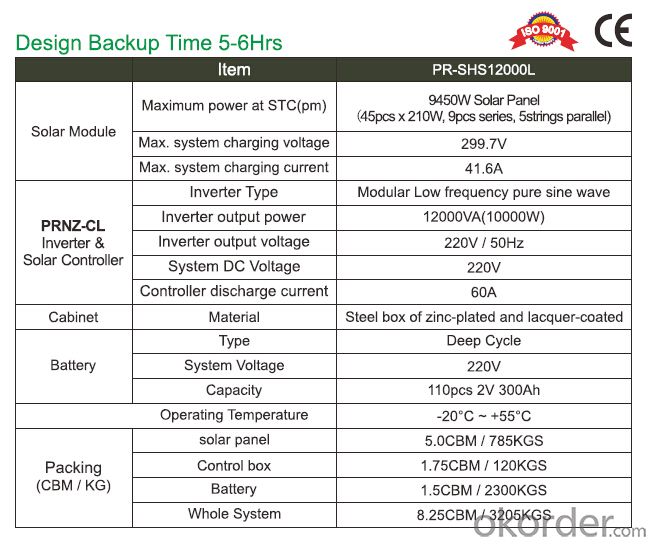
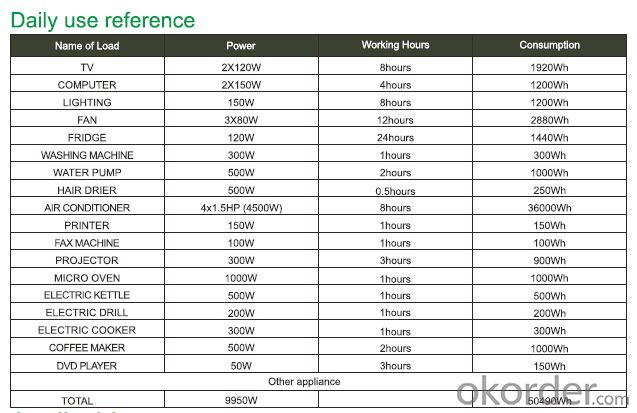
Product Features of Solar Home System
1. Off grid solar power system is mainly used for application with relatively-small power consumption, and the areas have no grid network coverage, or grid power is unstable or outage condition.
2. It’s composed of solar panels, hybrid solar inverter, battery bank, solar panel mounting racks, and other accessories required fora complete home solar power system.
3. The battery bank gives a stable power output to the solar inverter which converts DC to AC to power loads, and provides power backup in rainy or cloudy days.
4. The solar panels generate electricity at daytime and charge the battery bank.
5. The off grid home solar power system provides grid power bypass in case of battery power shortage when sunshine is not enough.
6. All the off grid home solar power system configurations are worked out by scientific calculation and design.
Advantage of Our Solar Home System
1 Excellent Performance: Our Solar Home System is composed by Brand Standard Kits with high quality. Our solar system has the advantage of high efficiency and stable operation. We can ensure our product with a long life period.
2. Small Orders Accepted: We can accept small orders as our customer’s trial order.
3. Warehouse: We have warehouse overseas which can bring great convenience to our customer to pick up the products.
Terms and Conditions
1. Trade terms: FOB Shanghai
2. Payment terms: 30% T/T, balanced before shipment/ LC at sight before shipment. Actual Terms can be negotiated for big order.
3. Package: Exported standard package suitable for tough handling and sea transport.
4. Delivery: Goods to be ready within 10~30 days depending on order quantity.
5. Warranty: 10 years for solar panel, 2 years for controller/inverter/battery.
FAQ
Q: Could you introduce the background of your company?
A: We are a Group corp. with 1GW capacity in China, which is Okorder’s registered VIP Supplier, possess Financial Service from Okorder.com.
Q: Required mainly certificates (CE&IEC/TUV/RoHS)?
A: Our products are certificated by CE RoHS, IEC, ISO, TUV, UL etc.
Q: Your main exported market is?
A: Main markets of our products is: South-east Asia, Mid-east, Arica, East Europe and Latin America.
- Q: Can solar cells be used in developing countries?
- Yes, solar cells can be used in developing countries. In fact, they are increasingly being used as a cost-effective and sustainable solution to address the energy needs of these countries. Solar cells provide access to electricity in remote areas where traditional grid infrastructure is unavailable or unreliable. They can power homes, schools, healthcare centers, and other essential services, improving living conditions and fostering economic development. Additionally, solar energy is abundant and renewable, reducing dependence on fossil fuels and mitigating climate change impacts.
- Q: What is the role of solar cells in reducing carbon emissions?
- Solar cells play a crucial role in reducing carbon emissions by harnessing the power of sunlight to generate clean and renewable electricity. By converting solar energy into electricity, solar cells eliminate the need for fossil fuel combustion, which is a major source of carbon emissions. This sustainable energy source helps to reduce our reliance on carbon-intensive power generation methods, thus mitigating the greenhouse gas emissions responsible for climate change.
- Q: Monocrystalline silicon and polycrystalline silicon cell in the appearance of what is the difference?
- There is a part of the area filled with dissatisfaction, and polysilicon solar cells are square, there is no such problem, so the efficiency of the solar cell components is almost the same. In addition, due to the two solar cell materials manufacturing process is not the same, polysilicon solar cell manufacturing process consumption of energy than monocrystalline silicon solar cells about 30%, so polysilicon solar cells
- Q: How do solar cells perform in high altitude regions?
- Solar cells perform better in high altitude regions due to several factors. Firstly, high altitude regions typically have less air pollution and less cloud cover, meaning there is more sunlight available for solar cells to convert into electricity. Additionally, the thinner air at high altitudes allows for more efficient solar cell performance, as there is less atmospheric interference. Lastly, the lower temperatures at higher altitudes can also enhance the efficiency of solar cells, as they work more effectively in cooler environments. Overall, solar cells tend to perform exceptionally well in high altitude regions.
- Q: What is the maximum voltage output of a solar cell?
- The maximum voltage output of a solar cell depends on various factors such as the type of solar cell, sunlight intensity, temperature, and cell design. Typically, most solar cells have a maximum voltage output ranging from 0.5 to 1 volt.
- Q: How do solar cells generate electricity at night?
- Solar cells do not generate electricity at night because they rely on sunlight to produce an electric current. During the night, there is no sunlight available for the solar cells to convert into electricity.
- Q: What is the impact of shading on solar cell performance?
- Shading has a significant impact on solar cell performance as it reduces the amount of sunlight reaching the cells, leading to decreased energy production. Even partial shading, such as from trees or nearby buildings, can result in substantial losses in power output. This is because solar cells are connected in series, and when one cell is shaded, it acts as a barrier to the current flow, affecting the performance of the entire system. To mitigate this issue, shading analysis and proper system design, like using bypass diodes, can help minimize the impact of shading on solar cell performance.
- Q: Are bulk solar cells better than the normal solar cells?
- Bulk solar cells are considered to be more powerful and functional based on the large amount usage of the solar cells.
- Q: Can solar cells be used in hotels?
- Yes, solar cells can be used in hotels to generate renewable and clean energy. They can be installed on the roofs or other suitable areas of hotels to capture sunlight and convert it into electricity, reducing the reliance on traditional energy sources and lowering utility costs.
- Q: How are solar cells used in calculators?
- Solar cells are used in calculators to convert sunlight into electrical energy, which powers the device and allows it to function without the need for batteries or external power sources.
Send your message to us
Xtj Prime Solar Cells CNBM Solar Roof Solar System 12000W Popular in Africa
- Loading Port:
- Shanghai
- Payment Terms:
- TT OR LC
- Min Order Qty:
- 1 PCS
- Supply Capability:
- 3000 PCS/month
OKorder Service Pledge
OKorder Financial Service
Similar products
Hot products
Hot Searches
Related keywords
